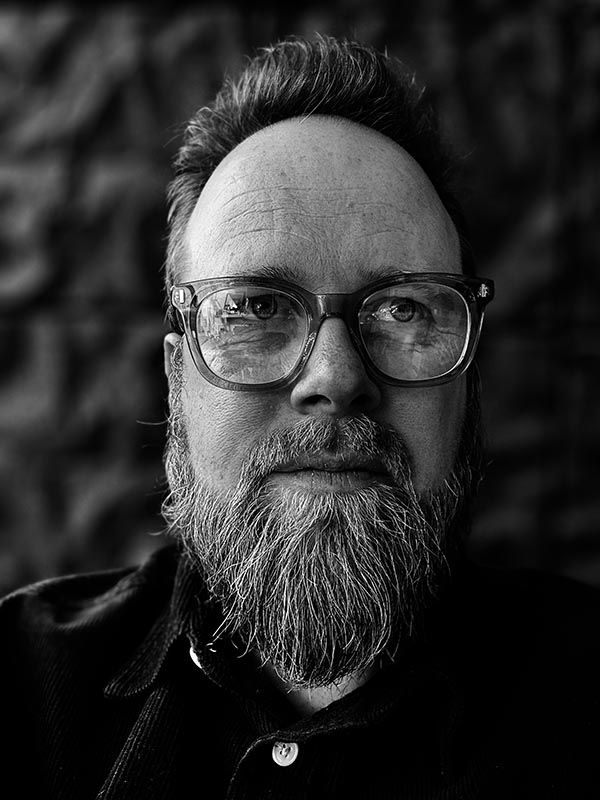Associate Dean, School of Creative and Cultural Industries

- Farnham
- Media enquiries
Tom Northey is the Associate Dean of School of Creative and Cultural Industries at UCA Farnham.
Bio
Over the past 26 years, Tom has held various leadership and academic roles, including Director of School, Programme Director, Course Leader, Senior Lecturer, and Associate Lecturer. These positions have provided him with extensive experience in supporting staff and students, fostering collaborations, and driving key initiatives. Tom has built strong international partnerships, representing UCA in countries such as Japan, South Korea, Switzerland, Sweden, the Netherlands, and Portugal, and has cultivated collaborations with leading companies including Boeing, The Design Museum, and Ogilvy.
In addition to academic leadership, as a Graphic Designer and Brand Consultant, Tom has worked with globally recognised brands, including the BBC, British Airways, Coca-Cola, Conran, Decca Records, Great Eastern Hotel, The Guardian, Innocent Drinks (Fruitstock), Jetix, Red Bull, Nike, Odeon Cinemas, Puma, Tate Britain, Virgin, and Zanders, across roles that demanded strategic thinking and creative innovation. This experience has given him a deep understanding of industry expectations and shaped his commitment to embedding industry-relevant practices into academic programs.
Research statement
Tom's academic work explores the notion of what it means to be a designer in the 21st century, his research in essence uses the systematic approach of parametric design as a means of approaching each project. That is to say that what he produces is not defined as art, design, sculpture, music or performance but all of these things. This rich melting pot has freed his constraints for making work. As such it predominantly focuses on removing the designer from the creative process by setting up systems to determine the outcome whether audio or visual.
Professional Membership, Affiliation and Consultancy
- Fellow of the Higher Education Academy
- Fellow of the Royal Society of Arts
- External examiner at Norwich University College of the Arts
Awards:
- Seven D&AD Awards.
Commissions:
BBC, British Airways, Coca Cola, Conran, Decca Records, Great Eastern Hotel, The Guardian, Innocent Drinks (Fruitstock), Jetix, Red Bull, Nike, Odeon Cinemas, Orange, Puma, Tate Britain, Virgin and Zanders.
Projects:
Tom's approach to design has been highlighted in an interview with Design 360 Magazine (China) Issue 53 (October 2014), where he presented his approach in a three double page interview exploring the notion of the bride between design, art and engineering. This working process has been used extensively throughout the following projects:
Harmonic Resonance Magneto v1.8
The visual representation of SAW sound waves employing liquid.
The Harmonic Resonance Magneto v1.8 outputs a variety of tones based on a predetermined scale programmed onto an Arduino board.
The user has the opportunity to intervene and tune this sound output using the five control knobs. At certain points during this period of experimentation the resonance on top of the water ‘clicks’ into sound formations - visualised. The resulting generative patterns sometimes, with fine tuning, result in square 'clusters'.
Didymus One
The visual representation of the interaction between two frequencies. A plotter that draws sound waves specified in conjunction with the audience to produce one-off ‘works’.
This apparatus highlights the possibilities of creating graphic form using the theory of Generativity combined with the maths and physics of beat tones - a phenomena that manifests itself acoustically between two sounds of slightly different frequencies. Beat tones are often used by musicians as a means of testing tuning at simple harmonic intervals; in this project the beauty of these waves are examined as graphic form.
The drawings produced are a visual representation of the interaction of two frequencies (sound waves). Two discs orbit at angles to each other (which are defined by the user) as they move the pen plots the course that is specified, and as a result of this combined motion, form is output. If the ratio is changed between the frequencies the output in turn is modified.
For instance the simplest patterns are drawn when the ratio of fraction frequencies are in unison, i.e. 1:1, 2:1 3:2 and so on. To create more complex patterns one must 'dial in' slight changes in harmony to create 'near unison' output drawings.
The possibilities of graphic output using such a system are endless as the parameters that are specified by the design of the apparatus enable the user to make iterative changes within a set framework. In this instance the current routine allows for six million iterations.
M.O.T.H.E.R Part 01 Omnipresent (EP)
Audio exploration of wave forms using generative modules to output ‘sound bytes’
M.O.T.H.E.R Part 02 Universum (EP)
Audio exploration of wave forms using generative modules to output ‘sound bytes’
M.O.T.H.E.R Part 03 Audio Research – Generative Composition Works
Exploration of the effect of audio on visual composition using algorithmic programming
Audio & Visual Composition research that is computationally driven using a variety of input modules. These include Korg Vulca 16 step analogue loop synths, Ableton Live, Processing and Arduino to produce one-off parametric works that were produced on the fly.
Outcomes have produced unique textile prints printed on silk (November, 2015) to audio responsive works based on the variable of sound (Time based iterations - January, 2016).
Didymus Sound System Presents: M.O.T.H.E.R Audio Research
Live performance combining amalgamating Parts 01/02/03
This performance presented the culmination of a systematic enquiry exploring generative composition using the parameters of amplitude and time as the main variable.
A stand alone application was developed using Processing to accompany a generative modular sound track that was performed live that interacted with the piece.
Didymus Sound System
Debut Album: Füür - in production

Media enquiries
For media enquiries, please contact our Press Office Team: pressoffice@uca.ac.uk.